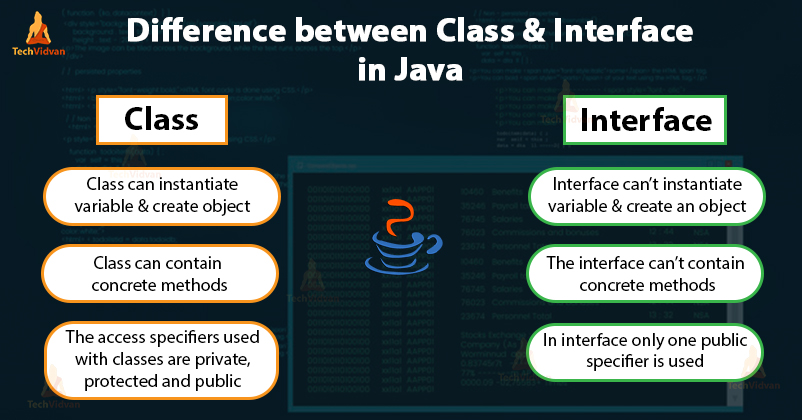

Interfaces cannot be instantiatedthey can only be implemented by. Method bodies exist only for default methods and static methods.


If each added method in an interface is defined with implementation, then no implementing class is affected. In the Java programming language, an interface is a reference type, similar to a class, that can contain only constants, method signatures, default methods, static methods, and nested types. A Java interface contains static constants and abstract methods. An interface in Java is a blueprint of a class. Therefore, default methods have introduced as a mechanism to extend interfaces in a backward-compatible way.ĭefault methods can be provided to an interface without affecting implementing classes as it includes an implementation. An Interface in Java programming language is defined as an abstract type used to specify the behavior of a class. Before Java SE 8, interfaces in Java could contain only method declarations and no implementations, and any nonabstract class implementing the interface had to provide the implementation. Modifying one interface in a JDK framework breaks all classes that extend the interface, which means that adding any new method could break millions of lines of code. Reengineering an existing JDK framework is always very complex. For example, in our real life, if we consider the interface to be given as an example is the air condition, bike, ATM machine, etc. Obj.newDefaultMethod() Why the Default Method? The Interface is a medium to interact between user and system devices. print “New default method add in interface” Method5() //static method inside other static method Method5() //static method inside other non-static method Creating a Package We can create our own package by creating our own classes and interfaces together. User defined packages The package we create according to our need is called user defined package. For example: java.util, java.io, java,lang, java.awt, java.applet,, etc. However, Java 8 re-engineered this, calling them virtual methods. Built-in packages are already defined in java API. Method4() //private method inside default method Until Java 8, the interfaces were abstract, you certainly cannot add implementation to it. Private non-static methods cannot be used inside private static methods.Private static method can be used inside other static and non-static interface methods.Private method can be used only inside interface.It is used to achieve abstraction and multiple inheritance in Java. There can be only abstract methods in the Java interface, not method body. The interface in Java is a mechanism to achieve abstraction. It has static constants and abstract methods. Next, each of the methods defined in the interface is called. You will now type in the Java statements for the program that calls the interface methods: The program instantiates the interface implementation. Everything in a method in an interface is considered abstract and public.
JAVA INTERFACE CODE
Executing a class as an interface by giving a code for every method declared through the interface.


 0 kommentar(er)
0 kommentar(er)
